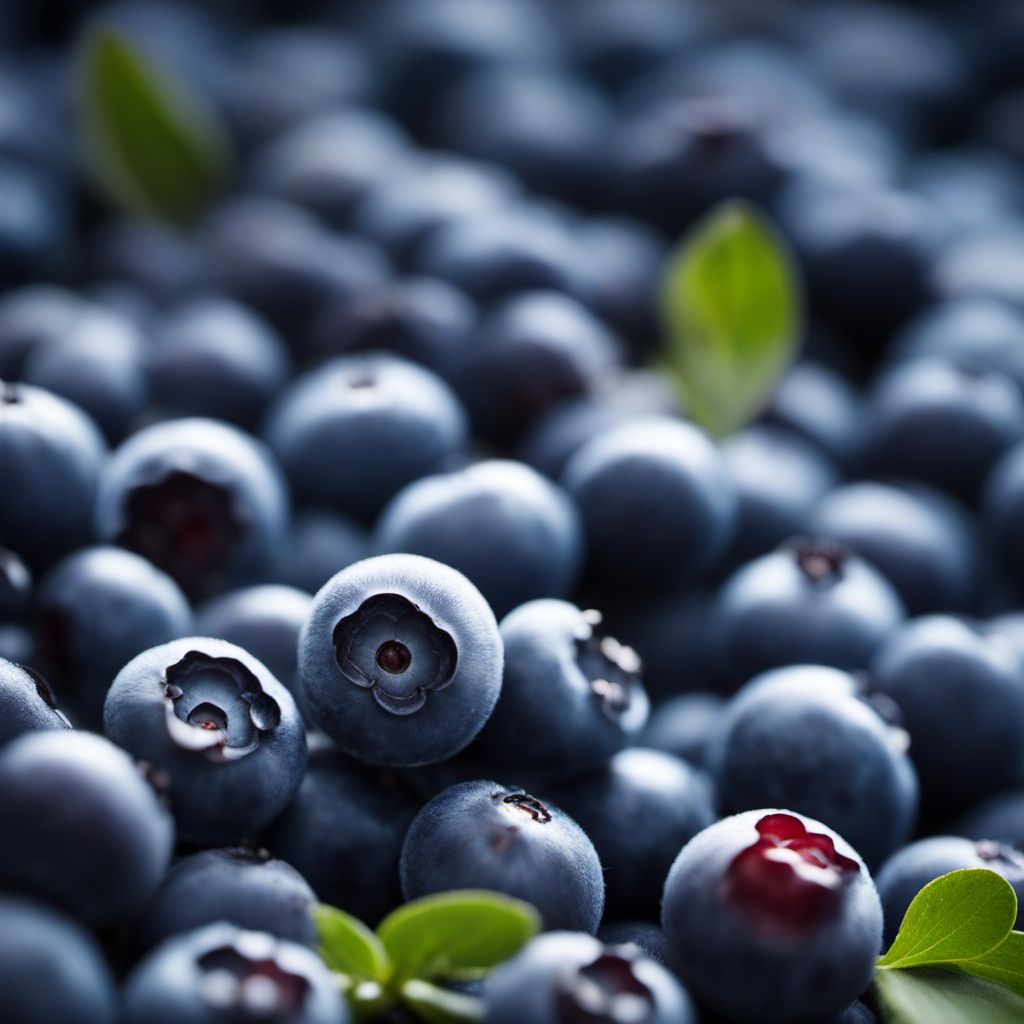
Ingredient
Bilberries (European blueberries)
The Secret Superfood: Unveiling the Wonders of Bilberries
Bilberries are small, round berries that resemble blueberries but are slightly smaller and darker in color. They have a deep blue to purple-black hue and a smooth skin. The flesh of bilberries is juicy and tender, with a sweet and tangy flavor. Their texture is delicate, offering a pleasant burst of juiciness when bitten into. Bilberries are often praised for their vibrant color and high antioxidant content, making them a sought-after ingredient in various dishes and desserts.
Origins and history
Bilberries have a rich history dating back centuries. They are native to Europe and have been a staple in traditional European cuisine for generations. These berries grow wild in forests and are often hand-picked during the summer months. Bilberries have also been used in traditional medicine for their potential health benefits, including improving vision and promoting cardiovascular health.
Nutritional information
Bilberries are a nutritional powerhouse, packed with essential vitamins and minerals. They are a rich source of antioxidants, particularly anthocyanins, which contribute to their deep blue color. These antioxidants help protect the body against oxidative stress and inflammation. Bilberries are also a good source of vitamin C, vitamin K, and dietary fiber. Additionally, they are low in calories, making them a guilt-free addition to a balanced diet.
Allergens
Bilberries are generally considered safe and do not commonly cause allergic reactions. However, individuals with a known allergy to berries or a sensitivity to salicylates should exercise caution when consuming bilberries.
How to select
When selecting bilberries, look for berries that are plump, firm, and have a deep blue to purple-black color. Avoid berries that are soft, mushy, or have signs of mold. Fresh bilberries should have a sweet aroma. If purchasing frozen bilberries, ensure that they are free from ice crystals and have been properly sealed to maintain their quality.
Storage recommendations
To prolong the freshness of bilberries, store them in the refrigerator in a breathable container or a perforated plastic bag. Avoid washing the berries until ready to use, as excess moisture can lead to spoilage. Properly stored, bilberries can last for up to a week in the refrigerator. Alternatively, you can freeze bilberries for long-term storage. Spread them in a single layer on a baking sheet and freeze until firm, then transfer to a freezer-safe bag or container.
How to produce
Bilberries can be challenging to cultivate, as they thrive in specific environmental conditions. However, if you have suitable acidic soil and a cool climate, you can try growing bilberries in your garden. Start by obtaining bilberry plants from a reputable nursery and plant them in well-drained soil. Provide adequate sunlight and water regularly to ensure healthy growth.
Preparation tips
Bilberries can be enjoyed fresh or used in various culinary preparations. Rinse the berries gently under cold water before using them. They can be eaten as a snack, added to smoothies, incorporated into baked goods like muffins or pies, or used to make jams and sauces. Bilberries pair well with flavors like lemon, vanilla, and cinnamon. Their vibrant color makes them an excellent garnish for desserts or salads.
Culinary uses
Bilberries are commonly used in desserts such as pies, tarts, and crumbles. They can also be used to make jams, jellies, and sauces. Additionally, bilberries can be added to breakfast dishes like pancakes, yogurt, or oatmeal for a burst of flavor and nutrition.
Availability
Bilberries are commonly found in Europe, particularly in countries like Sweden, Finland, and Norway. They are also cultivated in some parts of North America.
